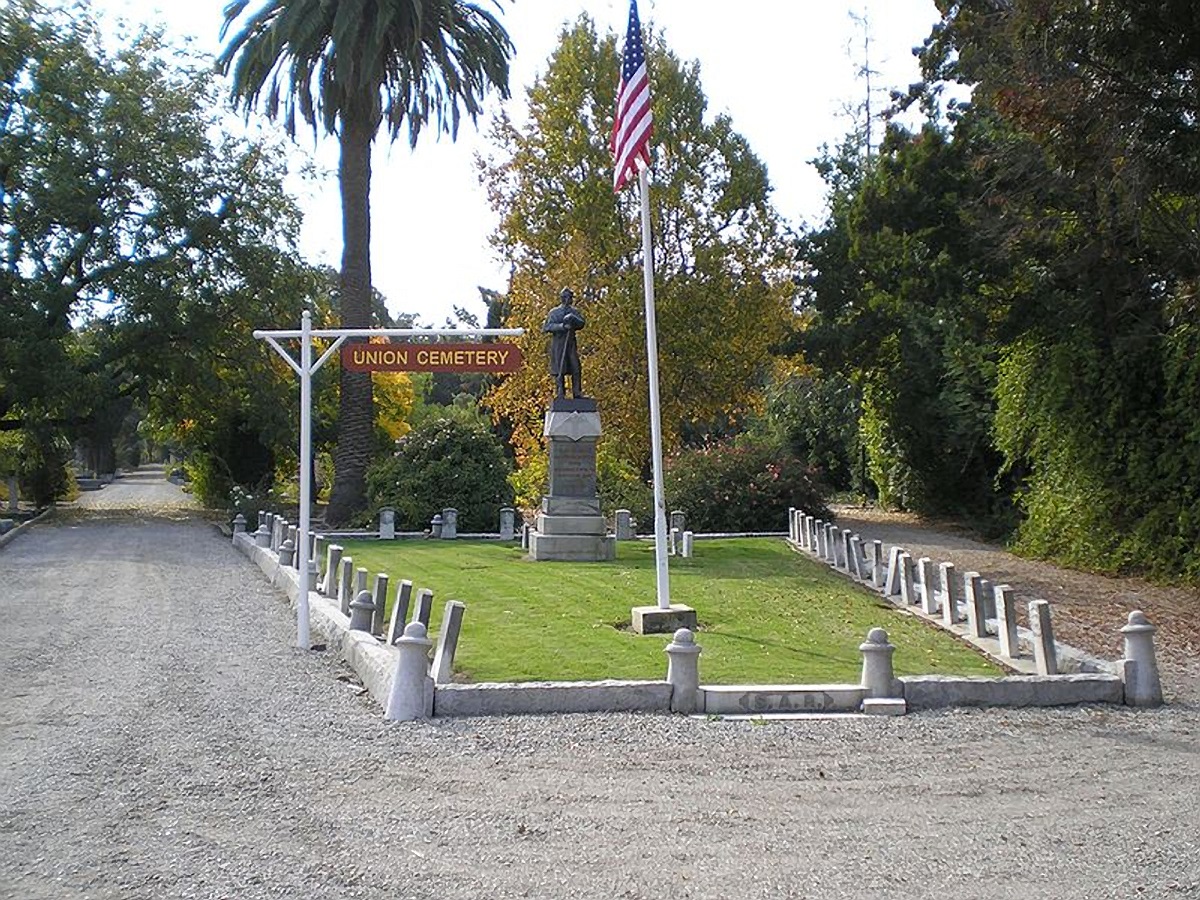Redwood City’s historic Union Cemetery wants its missing headstones back. Return them with no questions asked — even if swiped.
Kathy Klebe, a member of the cemetery association’s board, issued a public appeal for the return of the tombstones. She promised they will be installed properly, adding she would be “forever grateful.”
Some of the headstones may have been taken by people who thought it “would be cool to have real headstone from the 1800s.” Others motives may have been less frivolous. Some families may have removed the stones for safekeeping. “We think there may be headstones lying around in people’s garages that have been forgotten.” She told Climate that she was “very disappointed that so far” no one has come forward.
Homeless Headstones
Missing headstones can pop up just about anywhere. Eight years ago local historian John Edmonds wrote a story about a stone found in a little park on Main Street that had the initials “G.B.” on it. His best guess was that the stone marked the final resting place of Genevieve Badie who was buried in Union Cemetery in 1904. He conceded that there is “no way of knowing for certain” that “G.B.” stands for Genevieve Badie. Badie’s family lived in Redwood City at 912 Arguello St., according to the census. Her father was a laborer and her brother was a hod carrier, someone who carried bricks to bricklayers on a construction site.
Historic Union Cemetery Association President Ellen Crawford says the marker has been returned to the cemetery but she, like Edmonds, is not sure it belongs to Badie. “I’m skeptical,” she said. “As I recall, Genevieve’s family was very poor and I’m not sure they purchased a marker. And there are several other unmarked graves with those initials.”
Klebe said many headstones and markers disappeared in the latter part of the last century when the cemetery was in “a disheveled state” from neglect.
It is difficult to understand that the lovingly cared for cemetery, which dates back to 1859, was in such a state of disrepair that in 1966 the Redwood City Tribune supported moving the remains elsewhere so a park could be built. The park was a good idea because the cemetery was no longer “attractive,” the newspaper said in an editorial.
In retrospect, the Tribune’s stand does not seem all that shocking when one considers the cemetery’s history. In 1911 newspapers reported the cemetery was in a “disgraceful state, fences torn down and children playing around the gravesites.”
Even the statue of the Union soldier that stands over the Grand Army of the Republic plot was a target. By 1983, the year Union Cemetery was nominated for the National Register of Historic Places, the statue had been destroyed three times.
Soldier’s Rightful Place
Thanks to concerned citizens, the statue was replaced and today stands at parade rest over a plot that has 46 headstones honoring Civil War veterans. The last headstone in the GAR plot was placed in 1984 to mark the final resting place of James Baxter, who was wounded at Gettysburg. Baxter died in 1936 and was buried at the foot of the statue. His place was unmarked until relatives put up the stone.
The highlight of the cemetery’s year is the Memorial Day ceremony, called off this year because of the coronavirus. The observance usually attracts hundreds of people, many drawn by the event’s “firing of the anvil,” a Gold Rush tradition. One anvil is placed on another and a small charge set between and lighted, sending the top one high in the air. Not loud enough to wake the dead, but enough to get your attention.






